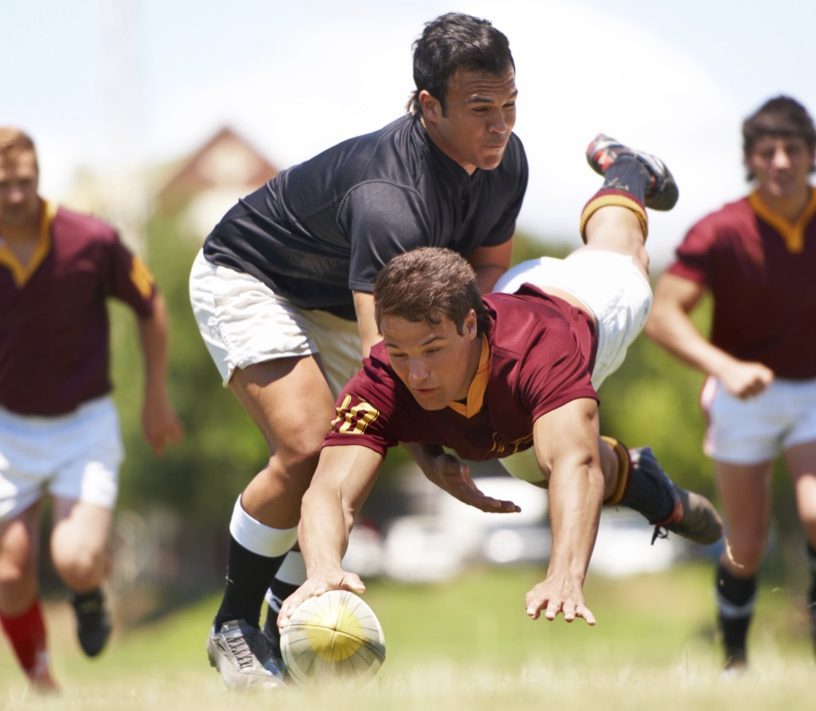There is a lot of information out there about concussion in sport, and we often see similar questions. How do they happen? Why do they happen? Can they be prevented? Are athletes in some sports at greater risk? How are they treated?
In this post, we’ll dispel some of those common myths. Please comment if you have others to add!
1. Myth: Helmets can protect against concussion in sport
Currently, there are no helmets that are proven to protect against concussion or reduce the incidence rate. A helmet does not prevent concussion because it’s is caused by acceleration or deceleration of the brain within the skull.1 However, helmets can protect against skull fractures and cuts, and therefore, should be worn as recommended, such as in high risk sports like hockey, football, skiing and cycling, among others.
2. Myth: Mouth guards can prevent concussion
This is not true. Mouth guards can reduce oral and dental injuries, but like helmets, there is limited research or evidence to support that they can prevent concussion.2
3. Myth: Only a hit to the head can cause a concussion
Concussion is an acceleration injury, causing the brain to rattle or shake in the skull. A big impact to the body can cause acceleration of the brain and result in concussion.1 Slide tackles, open ice shoulder hits and whiplash are possible causes of concussion because of the force that’s transmitted to the head.
4. Myth: Concussions can only happen in contact sports
While there are a significant number of concussions in contact sports such as rugby, hockey and football, concussions in other “non-contact” sports frequently happen. Sources show that head injuries commonly occur in sports such as soccer, cycling, skiing, basketball, baseball, dance and gymnastics.3,4,5
5. Myth: No loss of consciousness = no concussion
This is not true! It is estimated that more than 90% of concussions do not result in a loss of consciousness.1
6. Myth: Rest is the best recovery
Rest was once a common way to manage a concussion, but the most recent consensus statement on concussion in sport recommends a period of symptom-limited rest (24 to 48 hours). Following this period, athletes who suffered a concussion “can be encouraged to become gradually and progressively more active.”6 There are a range of effective evidence-based treatments to support recovery, which may include exercise therapy, manual therapy, diet and nutritional changes, vestibular and visual rehabilitation, and education and reassurance.
Given a concussion can happen at any place at any time, it’s important to know the signs and appropriate steps to management. Visit our website or follow us on Facebook.

